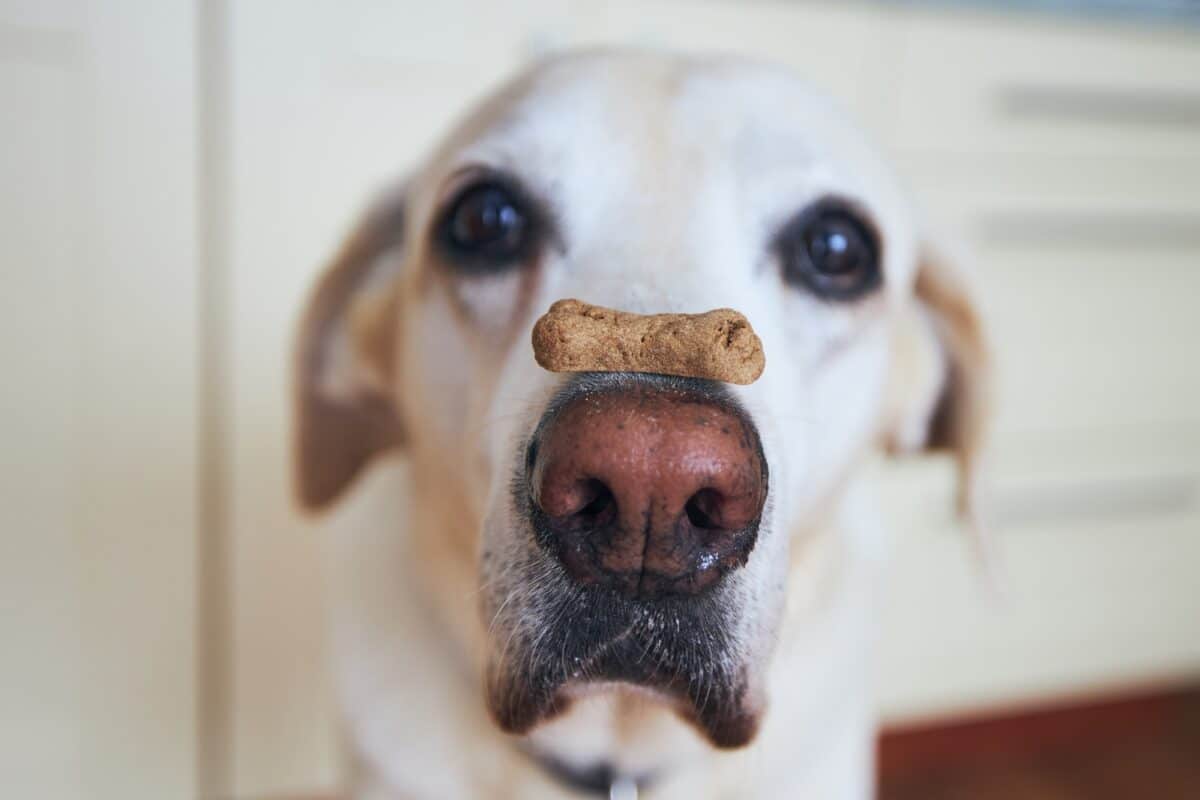Are you searching for the perfect puppy? While there are many fantastic dog breeds, Labrador Retrievers and Rottweilers offer loyal companionship with remarkable traits that make them stand out in a crowd. These two solid yet gentle dogs have been around for centuries as intelligent working canines, but which breed is better suited to fit your lifestyle?

In this article, we explore the similarities between Labs and Rotties so you can determine which breed will be best for your family situation.
So, dive into the history of these two majestic dogs, learn about their geography of origin, get familiar with common characteristics and personality traits, analyze pros and cons, and understand necessary health aspects, including vital nutritional elements required by each pup, ultimately leading to discovering which dog would be the ideal companion for you – Labrador Retriever or Rottweiler!
Overview of Labrador Retriever and Rottweiler breeds

Labrador Retrievers and Rottweilers are two popular breeds of dogs, each with unique characteristics. Labrador Retrievers are known for their friendly and outgoing personalities and love for playtime and exercise. They make excellent family pets and are incredibly popular as guide and therapy dogs.
Rottweilers, on the other hand, are known for their loyalty and desire to protect their families. While they may have a tough exterior, they are very affectionate and loving towards their owners. Both breeds have a lot to offer as companions and are beloved by many.
Whether you prefer the playful and energetic nature of a Labrador Retriever or the loyal and protective instincts of a Rottweiler, one thing is for sure: these breeds are certain to steal your heart.
Pros and Cons of Labrador Retriever vs. Rottweiler

When picking a dog, there are many breeds to consider. Two popular options are Labrador Retrievers and Rottweilers.
Labrador Retrievers are known for their friendly personalities and loyalty, making them an excellent fit for families with children. On the other hand, Rottweilers are more protective and territorial, making them a perfect choice for guarding homes and properties.
While both dogs have pros and cons, it ultimately comes down to personal preference and the family’s specific needs. Whichever breed is chosen, it’s important to remember that each dog is unique and requires proper training and care to thrive.
Physical Characteristics of Labrador Retriever vs. Rottweiler

When comparing two popular dog breeds, the Labrador Retriever and the Rottweiler, their distinct physical characteristics immediately come to mind. Labrador Retrievers are of friendly disposition and have unique shiny coats, usually in shades of yellow, black, or chocolate.
Moreover, they possess a solid and muscular body structure, generally weighing 55 to 80 pounds, and have broad heads with floppy ears. On the other hand, Rottweilers are a bit larger, weighing between 77 to 135 pounds. Their thick, shiny black, tan coats and triangular ears complement their broad forehead, usually held upright.
With their muscular build, robust appearance, and undeniable strength, Rottweilers are ideal for serving as guard dogs. Nevertheless, both breeds are incredibly lovable and make excellent companions, despite their differences in physical traits.
Labrador Retriever vs. Rottweiler Temperament & Behavior

When choosing between Labrador Retrievers and Rottweilers, temperament and behaviour play a crucial role. Labs, are friendly and affectionate by nature, are often called “people’s dogs.” They make great family pets, as children or even infants are safe around them.
However, Rottweilers are often regarded as more reserved and protective. They are faithful and loving with their family but can also exhibit aggression towards strangers. It’s important to note that each dog’s temperament and behaviour can vary depending on multiple factors, such as its owners’ personality and upbringing style.
However, understanding the general characteristics of each breed can help you make an informed decision when choosing a furry companion.
Labrador Retriever vs. Rottweiler Food Preferences

Regarding Labrador Retrievers and Rottweilers, their food preferences can vary. Labs are foodies and can be motivated by tasty treats. On the other hand, Rottweilers may be more particular about what they eat and can have a sensitive digestive system.
It’s noteworthy that the nutritional requirements of each breed and choosing appropriate food that meets their dietary needs are crucial. Whether you’re dealing with a picky Rottie or a food-loving Lab, finding the right food that keeps them happy and healthy is vital.
Cost to Own Labrador Retriever vs. Rottweiler
When considering adding a new furry member to your family, it’s essential to factor in the cost of ownership. Two popular breeds, Labrador Retrievers and Rottweilers, may seem similar in temperament and size, but their cost of ownership can vary.
Both breeds require regular visits to the vet, quality food, and toys to keep them entertained. However, Rottweilers may have a higher cost of ownership due to potential health issues common with the breed, such as hip dysplasia and bloat.
Owning a dog involves time, energy, and money, but their love and companionship make it worthwhile.
Frequently Asked Questions
Labrador Retrievers typically live between 10-12 years, while Rottweilers can live up to 8-10 years.
Both breeds are usually very friendly and safe for children. However, Labradors tend to be more gentle and patient than Rottweilers regarding kids. Do Labrador Retrievers or Rottweilers require more exercise? Rottweilers need more training and stimulation than Labradors to stay healthy and happy; however, both breeds will benefit from regular exercise and playtime.
Labradors tend to be better suited for apartment living, as they can adjust more easily to smaller spaces due to their smaller size. However, both breeds can do well in apartments with adequate daily exercise and proper training.
Both breeds shed moderately year-round; however, the Labrador Retriever has a thicker double coat which may require more frequent grooming and brushing than the single-coated Rottweiler.
The Final Word

The Labrador Retriever and Rottweiler are two of the most common and much-loved dog breeds. Their different temperaments and behaviors offer great companionship and protection to those who own them.
Although Labs may be more expensive to purchase and maintain, they have a longer life expectancy than Rotties, making them a better long-term investment. Ultimately, the best dog for your family depends on lifestyle and preferences. For example, if you want a more obedient pet with more lowkey energy levels, then the Lab might be the better choice.
Whereas if you’re looking for a formidable watchdog that would provide excellent protection for your home, then a Rottweiler could be the better breed.
Any way you look at it, though, Labradors and Rottweilers can help bring unconditional love and happiness into your home while giving you peace of mind!
Thank you for following along this article! Next up, Beagle Vs. Poodle.
- Spider Monkey vs. Dog in Tug-of-War Battle - April 18, 2024
- Baby in Lion-Costume Confuse Lions at Atlanta Zoo - April 18, 2024
- Lioness Push Lion Cub into the Water at Washington Zoo - April 18, 2024

